Orolia 82-001 406MHz/121MHz EPIRB User Manual E3 users manual
Orolia Ltd 406MHz/121MHz EPIRB E3 users manual
Orolia >
E3 users manual
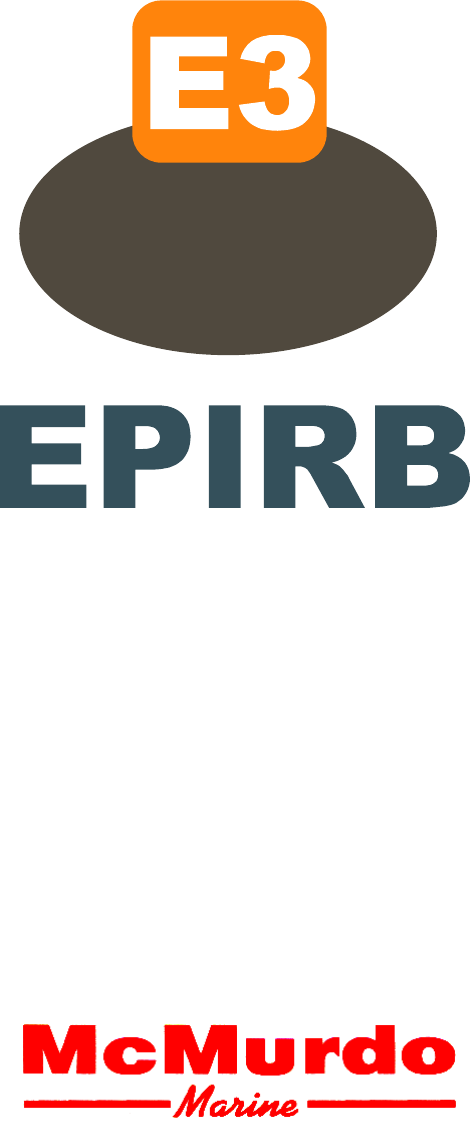
406 MHz
Satellite
OWNERS MANUAL
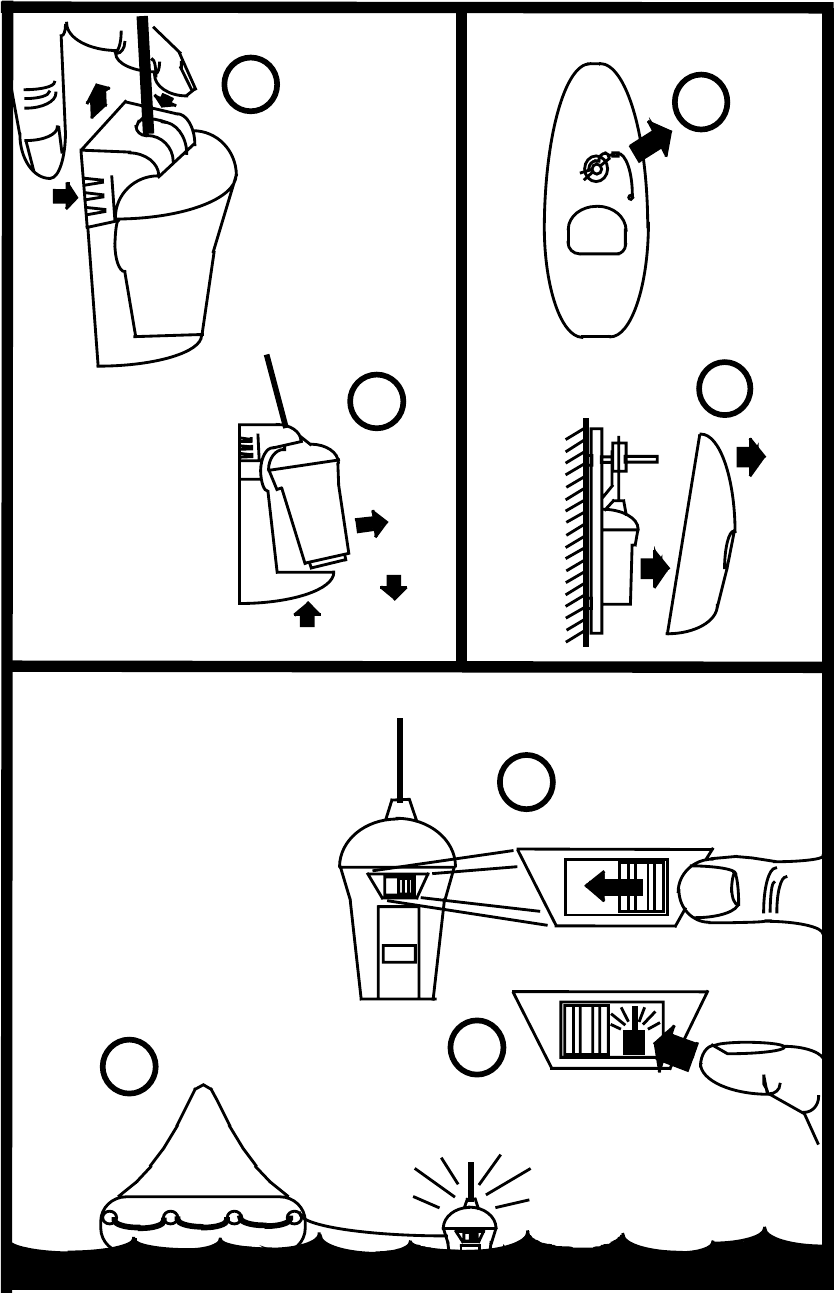
sos 3
4
22
11
5
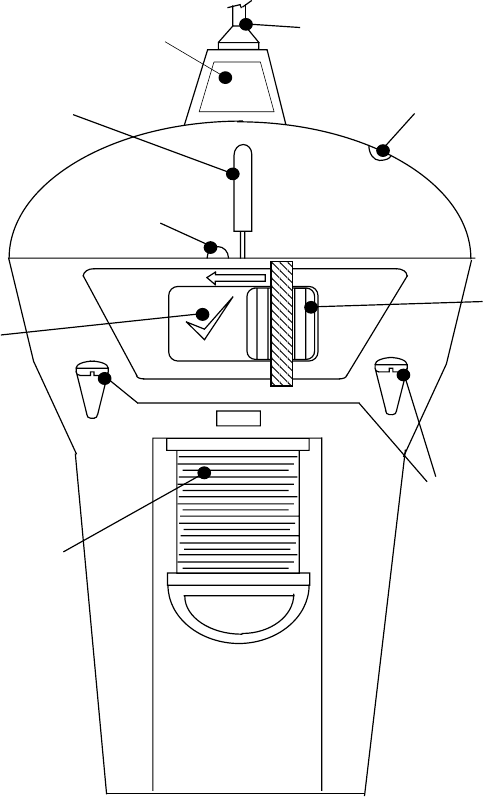
1
1. PURPOSE
An Emergency Position Indicating Radio Beacon (EPIRB) is used to alert search
and rescue services in the event of an emergency. It does this by transmitting a
coded message on the 406 MHz distress frequency. This message is relayed via
satellite and earth station to the nearest rescue co-ordination centre.
The McMurdo E3 works with the Cospas-Sarsat polar orbiting satellite system which
provides true global coverage. The system has an alert delay of typically 45 minutes
dependant on when the satellites come into view on the horizon.
The satellite can determine the position of your E3 to within 5km (3 miles) and the
coded message identifies the exact vessel to which the E3 was registered. This
information allows the rescue services to eliminate false alerts and launch an
appropriate rescue.
The E3 also has a secondary distress transmitter. This transmits on 121.5 MHz and
is used for “homing” purposes. When the rescue services get close, this allows
them to direction find on the signal. To cater for searches at night, the E3 has a
bright flashing light that aids final visual location.
S
E
A
L
READY
TEST
PRESS TO
Antenna
Strobe
Red lamp
Program point
Sea contacts
Lanyard
ON button
under here
READY
button
Battery expiry date

2
2. DESCRIPTION
The E3 is a powerful self-contained distress transmitter. It is powered by a light
weight Lithium battery that has a replacement interval of 5 years. An EPIRB is
intended to be a one-shot device, once activated it can operate for 48 hours. It
operates best while floating in water, but it can also be operated while onboard.
Refering to the previous figure, the key components of your E3 are as follows.
Antenna This is a flexible whip. It must be near vertical when operating.
If the antenna gets bent, gently straighten it out.
Strobe light This is the glass U-tube visible through the clear lens dome.
When the E3 is activated this will flash every few seconds.
Red lamp Visible through the clear lens dome at the rear of the E3.
This stays on or flashes to show you which mode you are in.
Program point A dimple in the clear dome, through which your supplier can
optically input the coded message unique to your E3.
You must register the coded message with local authorities.
READY button Press this key once to de-activate the E3. Hold it down to
run the built-in self-test, which checks basic operation.
ON button Press this key to manually activate the E3. The key is protected
by a sliding door, which is fitted with a tamper seal.
Sea switch The two screw heads below the keys are sea switch contacts.
Submerge these in water to automatically activate the E3.
Lanyard Pull the lanyard spool down to free it. Use the cord to tether the
E3 to a survival craft. Never tie the E3 to your vessel.
2.1 Wall bracket
If you purchased the manually activated version (E3m), this is normally supplied
with a wall mounting bracket (see section 6). The bracket is made from white plastic
so it will not rust. Its top section is sprung loaded, so that one simple squeeze will
quickly release the E3 allowing it to be carried to a liferaft. The wall bracket should
be sited in plain view near an emergency exit. This bracket is more than just a
stowage point, it contains a magnet which disarms the E3’s sea switch. If you do not
stow the E3 in its bracket, there is a risk of the E3 activating if it gets wet.
2.2 Float-free enclosure
If you purchased the automatically activated version (E3a), also known as the “float-
free” version, then your E3 is supplied in a plastic enclosure (see section 7). This is
much more than just a protective housing, it contains a sprung loaded lever which
automatically pushes the enclosure lid off and releases the E3 if your vessel sinks.
This automatic ejection is controlled by a device called a Hydrostatic Release Unit
(HRU). If the enclosure is submerged then before it reaches 4 metres (13 feet) deep
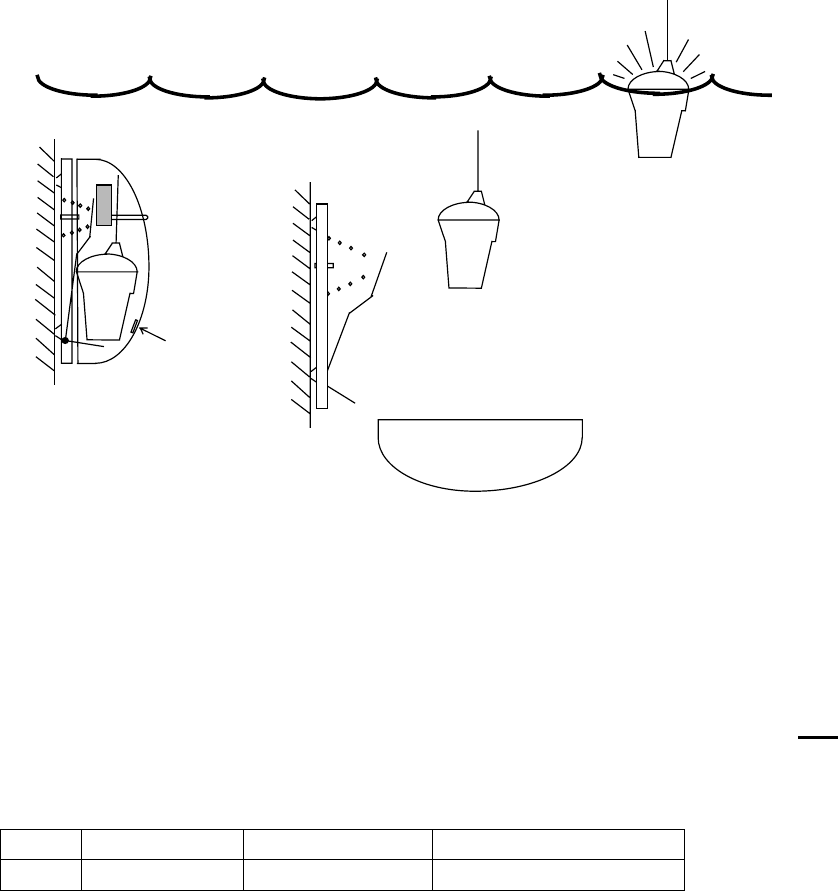
3
the HRU cuts a plastic rod that holds back the spring and the lid is ejected,
releasing the EPIRB which floats to the surface and switches on automatically.
The diagram below illustrates the automatic release sequence.
1) As the vessel sinks, the enclosure fills with water. The HRU contains a blade
which is released due to water pressure acting on a diaphragm. Before it
reaches a depth of 4 metres, the HRU will operate and cut the plastic rod,
releasing the coil spring.
2) The spring pushes the E3 and the enclosure lid outwards. As the lid pivots off
it disengages from the screw head that helped hold it in place. The lid is
weighted so it rolls over and falls away.
3) As the E3 floats away from the lid, it moves out of range of the magnet. Once
away from the magnet its sea switch becomes armed.
4) The sea switch activates. The EPIRB then floats on the surface with its strobe
light flashing. After 50 seconds it makes its first distress transmission.
If you need to manually activate your E3, it can be freed from the enclosure simply
by pulling out the R-shaped retaining pin and removing the lid.
2.3 Manual E3 in enclosure
Customers who need to mount their E3 in an exposed position can select the
protective enclosure without an HRU fitted (E3c). This means that the E3 will not
float free if your vessel sinks. This is known as a category 2 EPIRB. You can tell
which enclosure you have by reading the category from the front of the enclosure…
E3a Category 1 HRU fitted Automatic float-free
E3c Category 2 No HRU fitted Will not float free
H
R
U
1) HRU cuts rod
2) Lid ejects
4) sea switch
activates
3) EPIRB arms once
away from magnet
Magnet

4
READY
HOLD TO
TEST
ON
3. CONTROLS
3.1 ON button
This is hidden behind a sliding door, which protects it from accidental activation.
The sliding door has a tamper seal to show if the E3 has been activated before.
The E3 can be manually activated by sliding the door to the left (breaking the seal)
and then momentarily pressing the ON button.
When activated the E3 will start to flash immediately. It will not make any distress
transmissions for the first 50 seconds. This gives you a chance to turn it off, if you
activated it accidentally. During the first 50 seconds the red lamp comes on
continuously. When the red lamp starts to flash, the 50 seconds is over and distress
transmissions have started.
3.2 READY button
This button can de-activate the E3 and it can test the E3.
Ready Pressing and releasing this button quickly will de-activate the E3 and
return it to its “ready” state. When the button is released the strobe and
the red lamp will stop flashing.
Self-test Pressing and holding the ready button (for about 10 seconds) will allow
the built-in self-test to run. When the button is held down the red lamp
will come on for 4 seconds, then go off. During this time both the
121.5MHz homer and the 406MHz satellite transmitter make “safe”
transmissions. If both of these test transmissions arrive at the antenna
with sufficient power then the strobe light will flash 3 times to tell you
that all is well. If the strobe light does not flash within 10 seconds then
there is a fault and the ready button can be released.
3.3 Sea switch
It is important to realise that the only time the E3 is completely off is when it is fitted
in its mounting bracket. As soon as you take it out of its bracket a magnetic switch
activates and puts the E3 into its “ready” state. It will not drain the battery in this
state, but it will turn on automatically if the sea switch contacts are bridged by water.
The sea contacts are the two exposed screw heads beside the rear switches.
Although you can manually control the E3 with the READY and ON switches, the
sea switch overrides any manual settings. For the manual switches to operate
properly the E3 must first be dry so that the sea switch is de-activated.
To ensure the sea switch operates properly in rough seas, it has a built-in time
delay. It has to be wet for at least 2 seconds before it will activate and it has to be
dry for at least 8 seconds before it will de-activate.
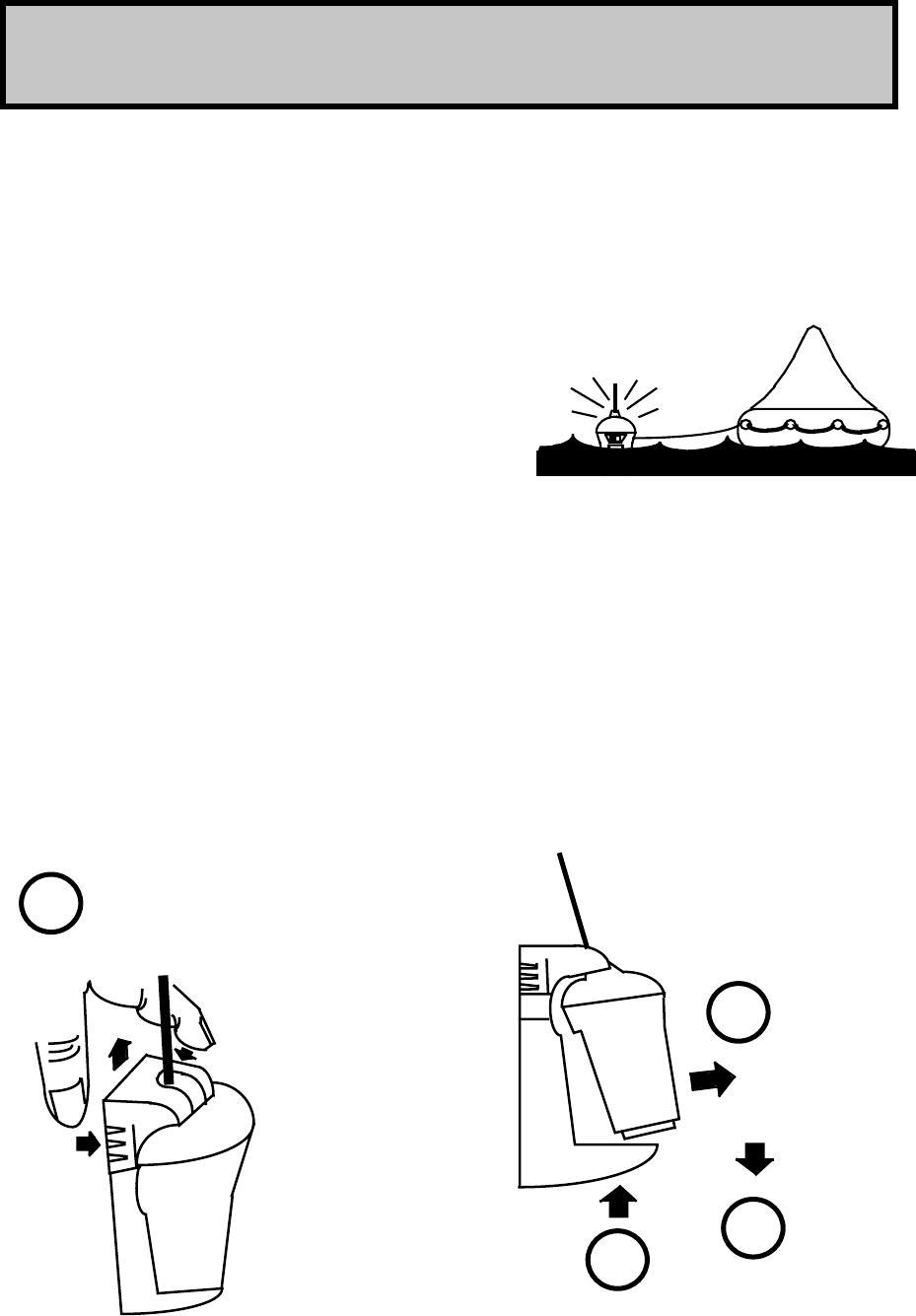
5
Squeeze top until
it springs up
1
2
Lift up to
free base
3
4
Pull
forward
Pull
down
4. OPERATING PROCEDURE
An EPIRB is a piece of life saving equipment. Its sole purpose is to call for help.
It must only be used in situations of grave and imminent danger.
Misuse can involve a severe penalty.
4.1 Sinking
If you have a category 1 “float-free” enclosure (see marking on enclosure label),
then if your vessel sinks, the E3 will automatically release itself from its enclosure
before it reaches a depth of 4 metres. The E3 will float to the surface and start to
operate because its sea switch is activated.
If possible, the E3 should be recovered and
tied (using its lanyard) to one of the liferafts.
An EPIRB is meant to mark survivors, not the
accident scene. For best operation leave the
E3 floating in the sea near the liferaft.
4.2 Abandon ship
If the vessel is sinking and there is time to fetch the EPIRB then this should always
be done. Release the E3 from its mounting bracket as described in section 4.3 or
4.4 and carry it to one of the liferafts. Once the liferaft is in the water, uncoil the
lanyard and tie it to the liferaft, then throw the E3 overboard so that it floats next to
the liferaft. The E3 will operate because its sea switch will activate.
4.3 Releasing E3 from a wall bracket
If you have an E3 fitted into a wall bracket then follow the instructions below to
release it from the bracket…
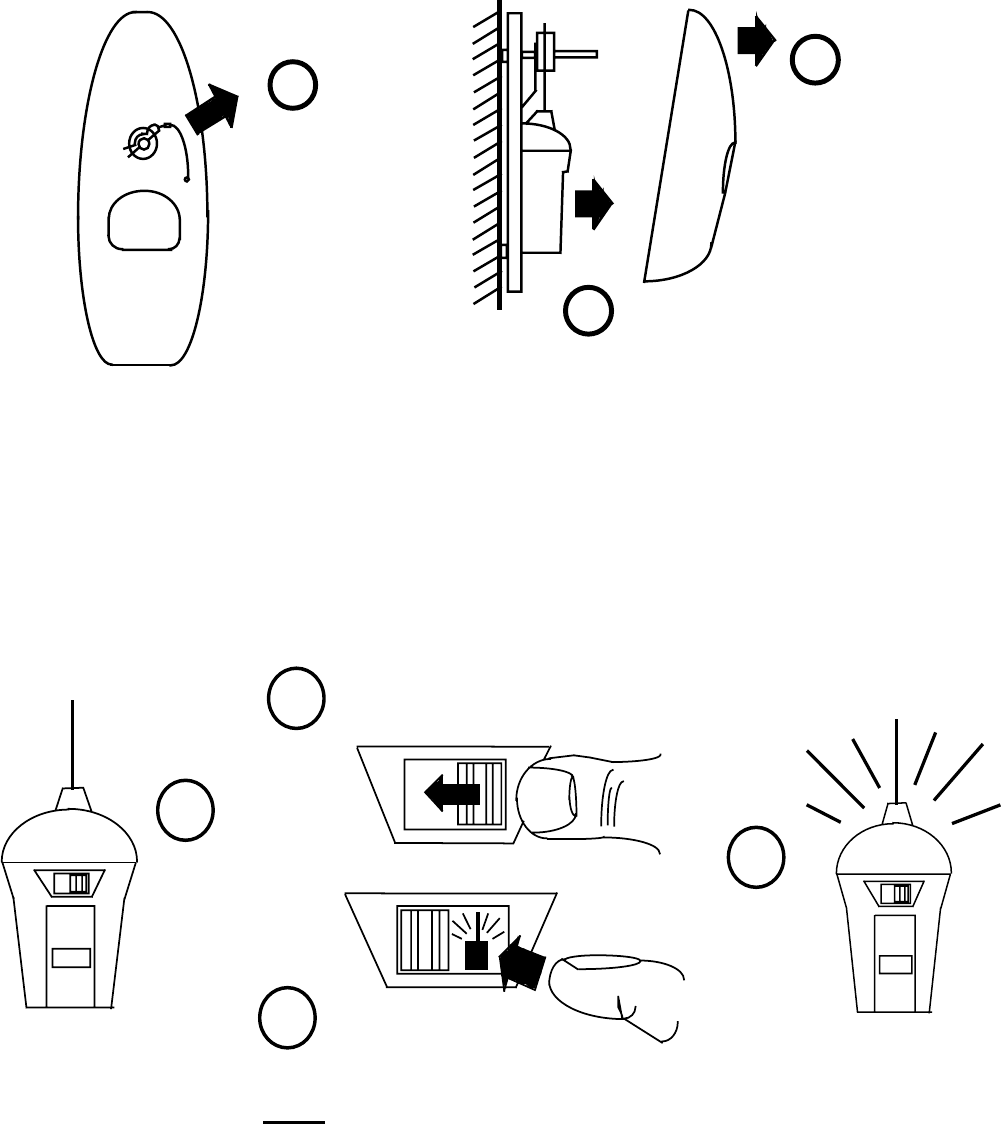
6
4.4 Releasing E3 from an enclosure
If your E3 is fitted inside a full enclosure then follow the instructions below to
manually release it from its enclosure…
4.5 Manual activation
If the vessel is not sinking, but there is imminent danger, then remove the E3 from
its bracket and manually activate it as shown below. Note that once activated it will
flash immediately, but it will not transmit a distress call for 50 seconds. This gives
you a chance to turn it off, if you activated it in error.
Once activated the E3 must have its antenna near upright and it must have a clear
view of the sky for proper operation. Lying it on its side or placing it next to a metal
wall will impair its range and may fail to alert the rescue services. Avoid handling the
antenna, as this will also impair performance.
2
1
Pull R-clip
from pin
Pull
cover
off
3Pull EPIRB
towards you
1
2
3
switches
Locate
on rear
Press ON button
4
EPIRB
will flash
Slide cover to left
Breaking tamper seal
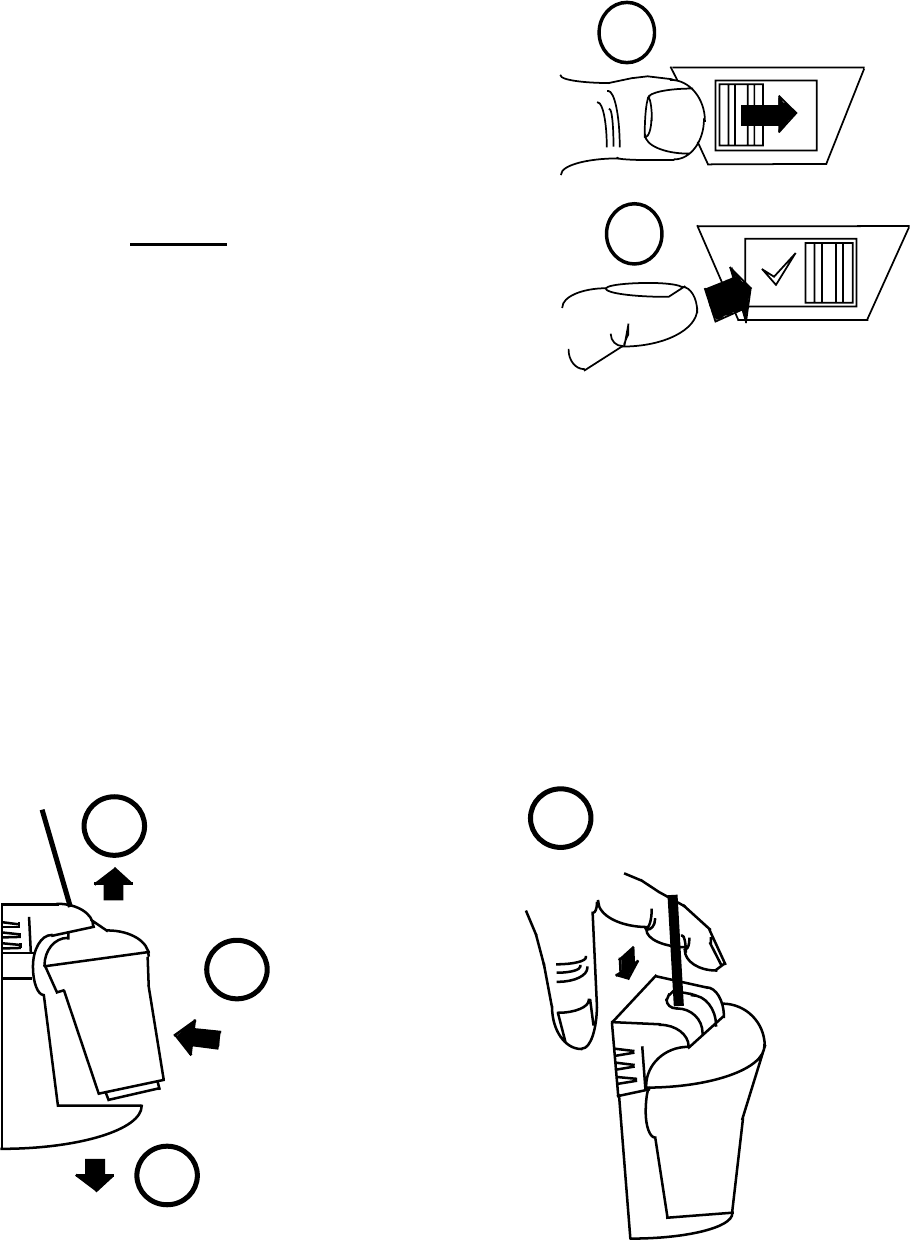
7
1
2
Slide cover to right
Press READY button
READY
HOLD TO
TEST
1Insert
antenna
2
3
Push
backwards
Push firmly
into cup
Push down
until clip locks
4
4.6 De-activation
If the E3 was activated by mistake or if the emergency ends then the E3 can be
reset back to its “ready” state as follows…
• Remove EPIRB from any water
and dry its sea switch contacts.
Wait 8 seconds for sea switch to turn off.
If EPIRB is still flashing then it must have
been turned on manually…
• Slide the switch cover fully to the right.
• Press and release READY button.
If EPIRB is still flashing then it has a fault.
Refer to section 5 on “False alarms”.
4.7 Battery condition
If your E3 has been activated for a cumulative period in excess of 2 hours then its
battery will need replacing. This is necessary to ensure that the next time it gets
used it will operate for the full 48 hours required by government regulations. See
section 9.3 for battery replacement instructions.
4.8 Re-fitting E3 into wall bracket
The E3 is now in its “ready” state, but its sea switch is still armed and will activate if
it gets wet. To fully de-activate the E3 it must be returned to its mounting bracket,
where a magnet hidden in the bracket will make the E3 safe. Follow the appropriate
instructions below…
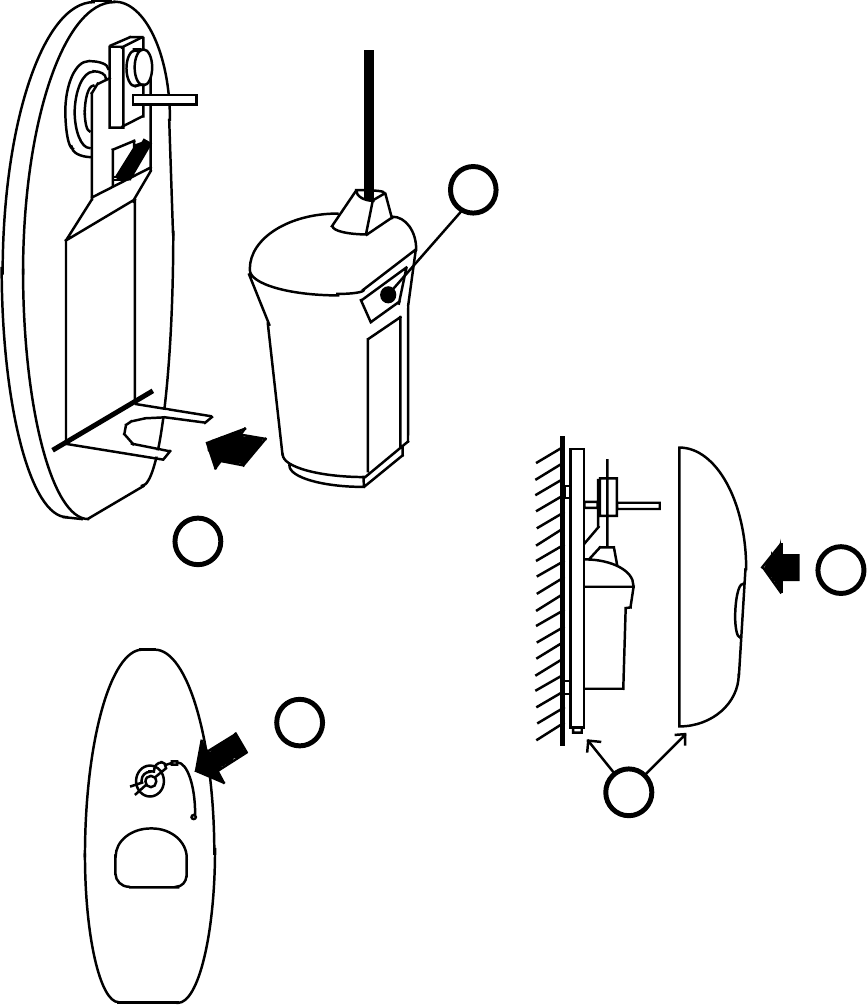
8
4.9 Re-fitting E3 into enclosure
• Offer E3 into backplate with switches facing outwards.
• Engage base of E3 into D shaped metal prongs.
• Antenna rests either to left or right of release pin.
• Check E3 is fully engaged in metal prongs and resting on foam pad.
• Refit cover by first locating release pin through hole in cover.
• Locate cover onto backplate, then snap down over locating lug.
• Refit R-clip through hole in end of release pin.
3
Fit cover
over pin
4Snap cover onto
locating lug
5
Fit R-clip
through pin
1
2
Switches
facing
out
Slide D-shaped
foot into prongs

9
5. FALSE ALARMS
False alarms are a serious problem for the rescue services. About 90% of EPIRB
initiated distress alerts turn out to be false alarms. If your EPIRB should cause a
false alarm, follow the instructions below…
5.1 Stand down rescue services
It is most important that you contact the nearest search and rescue authorities and
tell them it was a false alarm, so that they can stand down any rescue services. Use
any means at your disposal to make contact. Often this can be by VHF radio to the
local coastguard or mobile phone if you are within coastal range, but MF/HF DSC
and Inmarsat A,B,C,M may also be used. Useful contacts are…
Country Region Telephone What to report
Atlantic / Gulf of Mexico (212) 668 7055
Pacific (510) 437 3700
USA
From any location (800) 323 7233
UK From any location 01326 317 575
EPIRB Unique ID (UIN)
Date, time & duration
Cause of activation
Location when activated
5.2 De-activate the EPIRB
If the E3 was activated by mistake, then de-activation is simple…
• Remove the E3 from any water and dry its sea switch contacts.
• Wait about 8 seconds for the sea switch to de-activate.
• If the E3 is still flashing then it must have been turned on manually…
• Slide the switch cover fully to the right.
• Press and release the READY button.
• The E3 should now stop flashing.
• Refit the E3 into its mounting bracket (correctly).
Modern EPIRBs have sea switches and it is not uncommon for the sea switch to
activate in rough seas or heavy rain, simply because the EPIRB has been badly
fitted in its mounting bracket. The E3 bracket has a hidden magnet to hold the E3 in
an off state. If the E3 is wrongly fitted the magnet does not do its job and heavy
seas may activate the sea switch. The simple cure is to ensure the E3 is correctly
fitted as per section 4.8 or 4.9.
5.3 Dealing with a transmitting E3
In the unlikely event that your E3 develops a fault and will not turn off, then prevent
its radio signal from reaching the satellite using one of the following methods…
• Remove the antenna. Wrap the E3 in metal foil and take it below decks.
• Remove the antenna and place the E3 in a metal container or locker.
Leave it in this condition for 3 days until its battery is dead. See section 9.4 for
instructions on returning the E3 for servicing. Also see section 9.7.
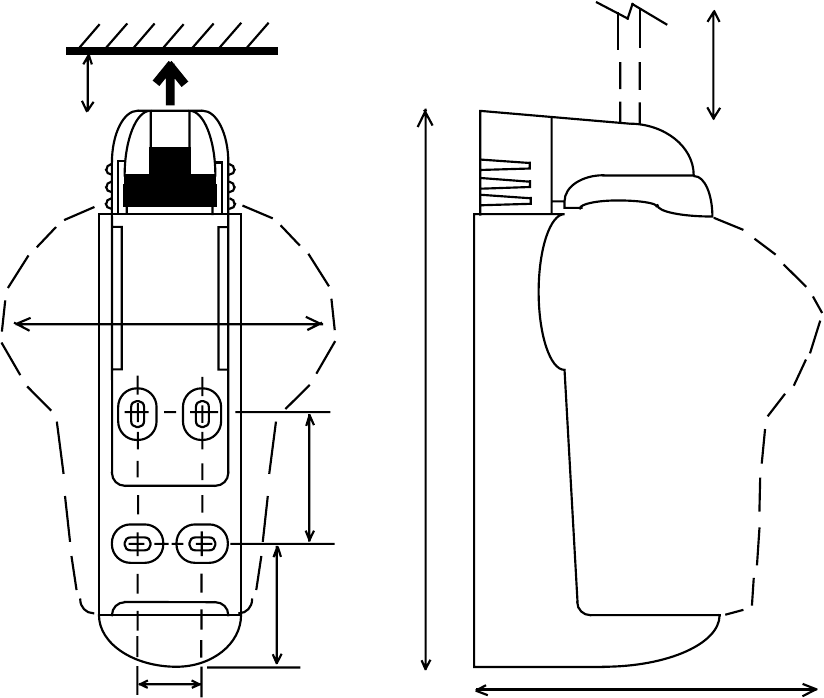
10
6. WALL BRACKET INSTALLATION
6.1 Siting
The wall bracket should ideally be sited in plain view near an emergency exit. When
choosing a suitable mounting position you should also consider…
• Ease of access in an emergency.
• Mount at least 1 metre (3’) from any compass equipment.
• Allow at least 25mm (1”) above the bracket for it to spring open.
• Allow 18cm (7”) for the antenna. Heavy bending of the antenna is bad.
6.2 Mounting procedure
The wall bracket is supplied with a set of stainless steel fixings 25mm (1”) in length.
The bracket mounts against a flat surface using 4 fixing points. Offer the bracket
into the chosen position and mark through the mounting slots. If you are using the
nuts and bolts supplied, drill 6mm (1/4”) holes in the centre of each mark. You will
need a 4mm Allen key to tighten the bolts. If the rear of the mounting surface is
inaccessible then use the self-tapping screws supplied and drill 3mm (1/8”) holes.
Always fit washers under the heads of the screws to avoid damage to the plastic.
175mm
(7")
130mm
25mm
(1")
29mm
(1.14")
59mm
(2.32")
55mm
(2.16")
240mm
(9.5")
115mm
(4.5")
(5.1")
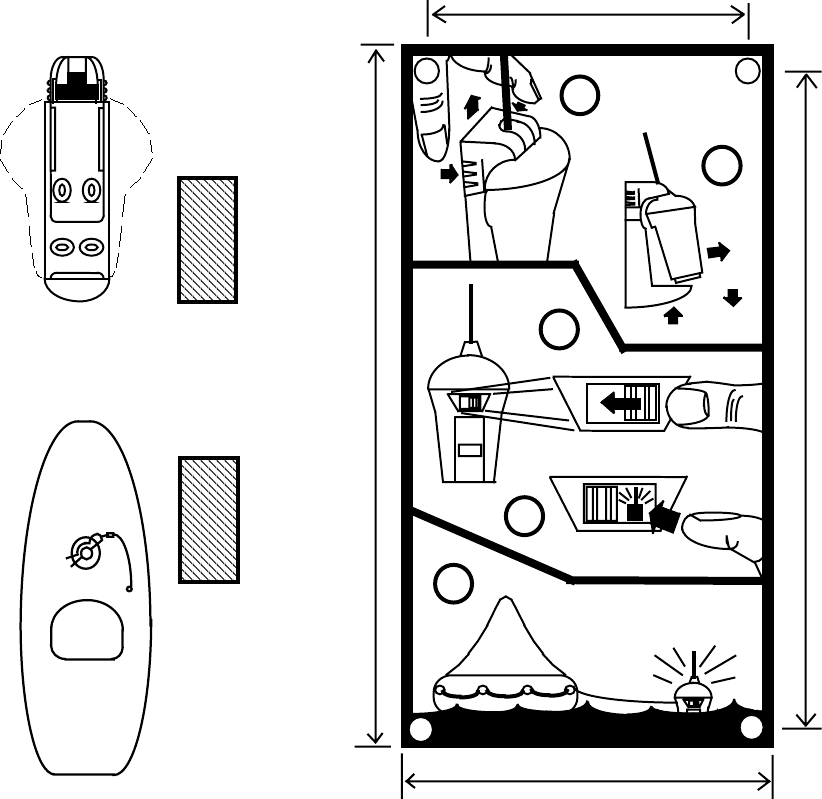
11
6.3 Mounting instruction plate
The E3 is supplied with an instruction plate. This is a rigid plate with basic visual
instructions for how to operate the E3 in an emergency. The plate varies slightly
depending on whether you have a wall bracket or a full enclosure. The wall bracket
version is illustrated below.
The instruction plate should be mounted next to the EPIRB so that it is easily visible
in an emergency. Use the four self-tapping screws supplied to mount the plate.
Mounting dimensions are shown in the diagram above, or you can use the plate
itself at a drilling guide for the screws.
During vessel maintenance, ensure the plate does not get painted over or cleaned
down with strong degreasing solvents.
sos2
1
3
4
5
58.4mm (2.3")
70mm
(
2.75"
)
130mm
(5.1") 116.3mm
(4.58")
Mount plate
next to EPIRB
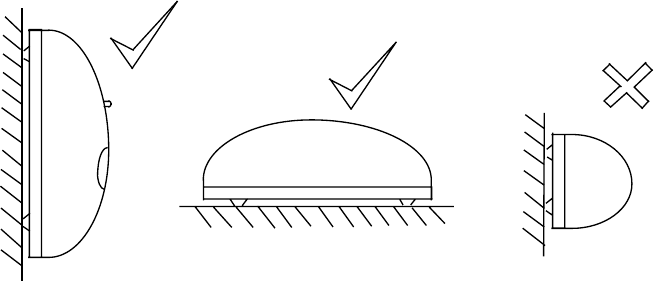
12
7. ENCLOSURE INSTALLATION
7.1 Siting
The enclosure should be mounted upright against a vertical bulkhead. Alternately, it
may be mounted horizontally on a flat surface, such as a cabin roof. No other
orientations are recommended.
If you have a float-free E3 it is critical that you choose a position where the released
EPIRB will not get trapped by overhangs, rigging, aerials etc, should the vessel
ever sink. An expanse of flat surface is required to allow the enclosure lid to eject.
Use the list below to choose a suitable mounting position…
• Mount on the outside of the vessel’s structure.
• Mount close to the vessel’s navigation position.
• Consider ease of access in an emergency.
AVOID• Positions with insufficient space for lid ejection and maintenance.
• Positions within 1m (3’) of any compass equipment.
• Mounting within 2m (6’) of any Radar antenna.
• Direct impact from waves
• Siting where damage is likely.
• Exhaust fumes, chemical and oil sources.
7.2 Mounting procedure
The enclosure mounts against a flat surface using 4 fixing points. See illustration for
mounting dimensions, or use the backplate of the enclosure as a marking guide. To
do this, pull out the R-shaped clip and remove the enclosure lid. Note how the E3
fits then remove it to somewhere dry (its sea switch is now armed).
Offer the back plate into the chosen position and mark through the mounting holes.
The enclosure is supplied with a set of 25mm (1”) stainless steel fixings. If you are
using the nuts and bolts, drill 6mm (1/4”) holes where you have marked. You will
need a 4mm Allen key to tighten the bolts. If the rear of the mounting surface is
inaccessible, use the self-tapping screws supplied. Always fit washers under heads
of the screws to avoid damaging the plastic.
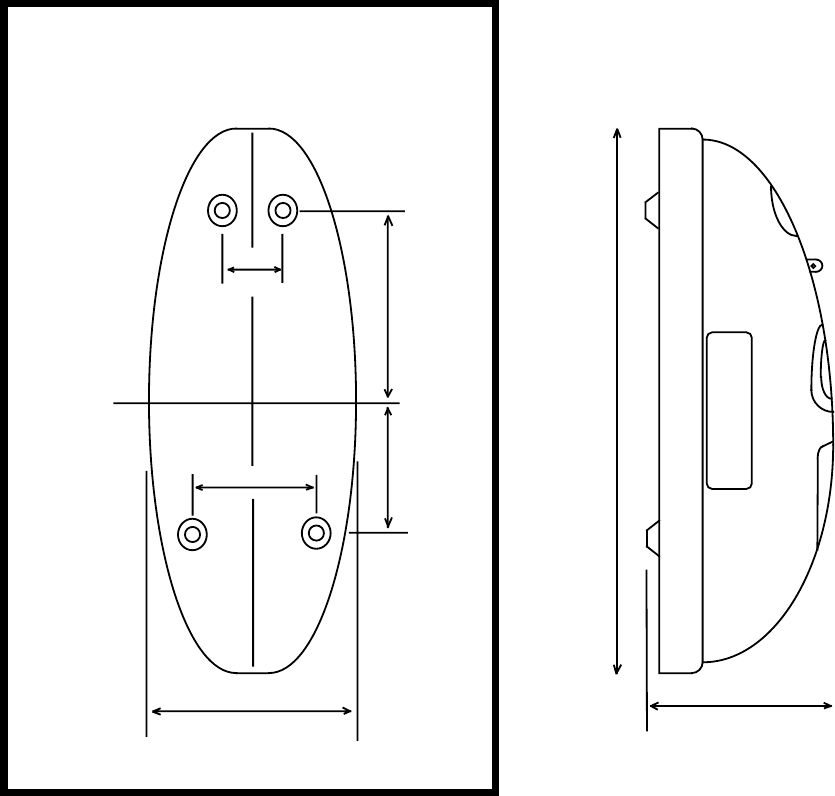
13
7.3 Mounting instruction plate
The E3 is supplied with a rigid plate giving visual instructions on how to operate the
E3 in an emergency. Mount this next to your EPIRB as explained in section 6.3.
7.4 Marking HRU expiry
If you are installing a float-free E3 you must now mark the HRU expiry date. The
HRU has a 2 year in-service life which starts as soon as it gets exposure to a
marine environment. Hence the 2 years starts at installation and it is left to the
customer to mark this date during installation. A date 2 years into the future should
be marked on the HRU body and copied onto the label on the side of the enclosure.
The HRU is marked by cutting out the corresponding dates on its label. The
enclosure should be marked using the alpha-numeric stickers provided, then
covering them with the clear sticky label provided (but see 7.5 first). The preferred
date format is month and year, for example : JUN 2001.
150mm
(5.9")
84mm (3.3")
44mm
(1.73")
104mm
(4.1")
150mm
(5.9")
440mm
(17.3")
140mm
(5.5")
OBSTRUCTION FREE AREA
0.8m x 0.5m (32" x 20")
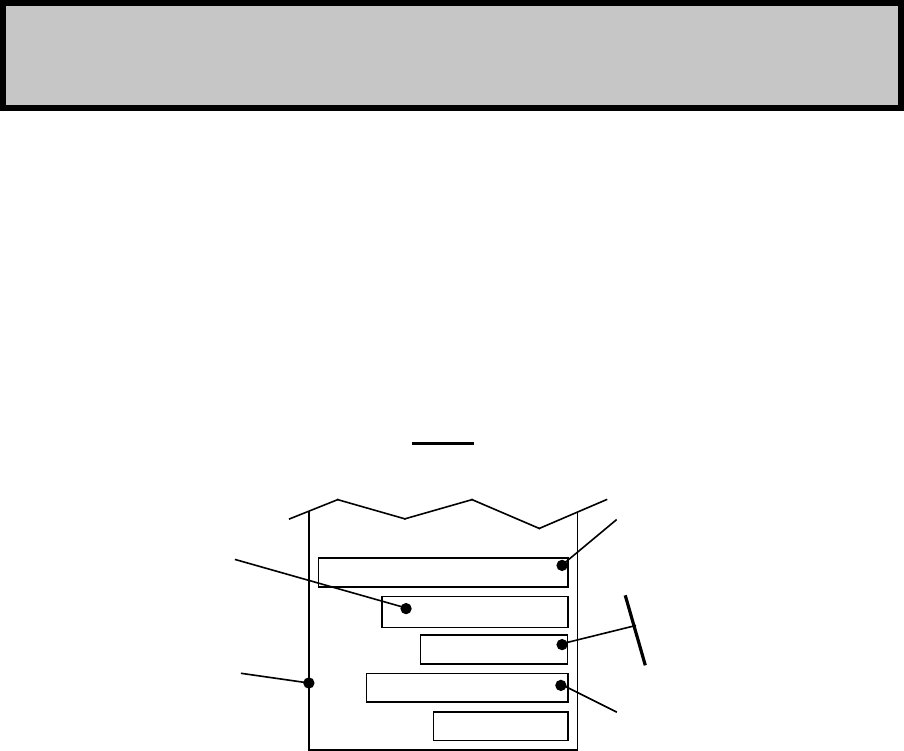
14
7.5 Marking vessel name
In most countries it is usual to have your EPIRB programmed by your supplier with
the vessel’s existing “callsign” (see registration section below). Your supplier will
then mark all the EPIRB labels accordingly. However, if your EPIRB was purchased
in the USA, Canada or UK then your EPIRB will have all the necessary markings
except for vessel name. In these countries it is left to the customer to mark the
vessel name during installation.
The name must be marked on the rear of the E3 itself and also on the enclosure, if
you have one. Use the alpha-numeric stickers provided to mark the vessel name (or
its abbreviation) on the top line of the E3’s rear label and again on the enclosure
label. Protect the markings with a section of the clear sticky label provided.
You must register your EPIRB with the appropriate authorities.
Failure to register may slow the rescue and lead to loss of life.
In the USA failure to register leads to monetary forefeit.
8. REGISTRATION
8.1 Overview
Every EPIRB is pre-programmed with a unique identity before it reaches the
customer. This is done by the manufacturer or in some cases the distributer. The
identity includes a 3 digit country code. This is the country that takes responsibility
for storing that particular EPIRB’s registration details. In most cases this is the
country to which the vessel is flagged. The country programmed into your E3 can be
found from its rear “identity” label. You must register with this country.
When you activate your EPIRB in an emergency, the nearest maritime search and
rescue coordination centre (MRCC) will receive the message and decode the
country code (eg 232). They will then access the registration database for that
country and expect to find details of your vessel, its radio equipment and who to
contact. If they fail to find this information, this may slow down any rescue.
Identity Programmed
Flag
Coding
Category
ID
MV Spirit of Freedom
232 G Britain
230768
9DOF3489CE34B21
1 AUTO
Vessel name here
15 characters used
by the authorities
Unique
Identity
Number
Serial Number
MMSI
Callsign
COUNTRY

15
8.2 How to register
Three registration forms are provided, two are for future use and one must be
completed now. The forms are all pre-printed with your EPIRB’s identity, all you
have to do is complete details of your vessel and provide some contact numbers.
Wherever possible the forms are also pre-printed with the correct mailing address
and a faxback number. If your form does not have a mailing address, contact your
supplier. When you have completed the form, you can choose to fax it or mail it.
It is usual to receive confirmation when you register. In the USA you will also
receive a “Decal” sticker which you must fit to the E3 itself. The Decal is proof of
registration. Not having a Decal is an offence. Useful registration contacts are…
USA Sarsat Beacon Registration
E/SP3, RM3320, FB-4
NOAA, 5200 Auth Road
Suitland MD 20746-4304
Tel 1888 212 7283 Fax 301 568 8649
UK EPIRB Registery
HM Coastguard (Southern)
Pendennis Point, Castle Drive
Falmouth TR11 4WZ
Tel 01326 211569 Fax 01326 319264
8.3 Warranty form
Please complete the warranty form supplied and fax or mail it to McMurdo. Failure
to do this may delay any future warranty claim.
8.4 Radio licence
An EPIRB is a radio transmitter and must therefore be added to your radio licence.
If you have been allocated a radio callsign, then you already have a radio licence for
your VHF or MF radio set. You should update your licence to include your EPIRB.
For further details see your licence or use these contact numbers…
USA FCC Tel : 888 225 5322 Website : www.fcc.gov\Forms\Form506\506.pdf
UK Wray Castle, PO Box 5, Ambleside, Cumbria LA22 0BF. Tel : 01539 434662
8.5 Sale or transfer
EPIRBs registered in the USA, Canada, UK and Australia do not need to be re-
programmed when transferred to a new vessel. Simply complete another
registration card to inform the authorities of the transfer. Use one of the spare cards
provided or contact McMurdo for a blank card. (See warranty section for address).
For most other countries, the EPIRB must be re-programmed with either the new
vessel’s Maritime Mobile Station Identity (MMSI) or its radio callsign, whichever is
required by the country controlling the new vessel.
Since the EPIRB identity contains a country code, it follows that changing the flag
state of the vessel also means the EPIRB must be re-programmed.
Programming can be carried out at McMurdo or any of our designated agents. For
details of your nearest agent, either contact McMurdo using the details in the
warranty section, or visit the McMurdo web site at www.mcmurdo.co.uk.

16
9. MAINTENANCE
9.1 Monthly self-test & inspection
As an important item of safety equipment, your E3 should be checked regularly. The
E3 has a built-in test capability that can be used as a confidence check. This self-
test confirms that the battery is healthy, that both of the distress transmitters are
functional and that the strobe light is operational. The self-test should be performed
monthly. It should be performed during the first 5 minutes of the hour, to minimise
disturbance on the emergency channel.
If your E3 is in an enclosure it can be tested through the test window, without having
to remove the E3 from the housing. If you have a bracket mounted E3 it will have to
be removed from the bracket as described in section 4.3. The procedure for self-
testing is as follows…
• On rear of E3 press and hold the READY button for 10 seconds.
• The red lamp will come on for 4 seconds to confirm test in progress.
• When the red lamp goes out, the strobe lamp must flash (3 times).
• If the strobe does not flash repeat the test then see section 9.4.
During these monthly checks you should take the opportunity to visually inspect the
E3 and its mountings for deterioration or damage.
On the E3 itself check the following…
1) Inspect the E3 for any obvious damage.
2) Check there is no sign of water inside the unit.
3) Check that the lanyard is not tied to the vessel structure.
4) Check the battery is within its expiry date.
If you have a wall bracket…
5) Confirm the bracket top clip springs up when squeezed.
6) Check the E3 is correctly fitted and secure in its bracket.
If you have an enclosure…
7) Check the HRU is within its expiry date (category 1 only).
8) Confirm the cover can be manually removed with ease.
9) Ensure the E3 base is correctly fitted into the D-shaped prongs.
If the E3 or its mounting needs cleaning then this should be done using warm soapy
water and a damp (not wet) cloth. Do not use strong detergents or solvents.
Do not paint the E3 or its mounting
Do not clean with detergents or solvents
During vessel cleansing or painting remove the E3 and its mounting
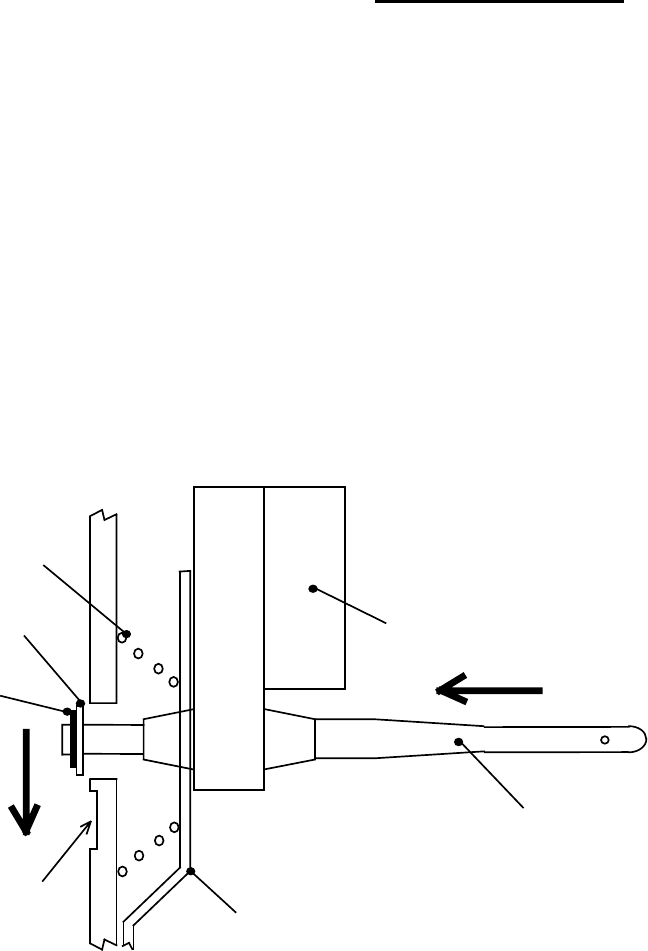
17
9.2 HRU replacement
If you have an E3 in an enclosure which is marked as category 1 then it contains a
Hydrostatic Release Unit (HRU). This has a 2 year replacement interval. The HRU
expiry date should be checked regularly. It is marked on the HRU itself and also on
the enclosure side label.
When the HRU expires you can obtain a replacement at a local chandler, or direct
from McMurdo at the address shown on the warranty page. McMurdo will supply an
HRU kit (Part No. 82-210B) complete with breakable plastic rod, date labels and
instruction sheet. At a chandler you should ask for a Pains Wessex “Breakthrough
HRU with an EPIRB kit”. The HRU replacement procedure is as follows…
1) On the enclosure, remove the R-clip and pull the cover slowly off.
2) Remove the E3 and stow it in a dry place. It will activate if wet.
3) Hold back the metal lever arm to take up the force of the spring.
4) Push the HRU back then upwards, out of slot in the lever arm.
5) When the rear clip disengages slowly release the lever arm.
6) The HRU with its breakable rod can now be lifted free and replaced.
7) Using pliers, remove the rear E-clip and slide off the old HRU.
8) Fit the new HRU over the new rod, with its label facing outward.
9) Refit the washer and the rear E-clip. Ensure rod moves freely.
10) Mark the HRU with an expiry date 2 years into the future.
11) Slide the HRU into the slot in the lever arm and push lever arm back.
12) Engage rear washer into backplate by pushing back and sliding down.
13) Look under the spring and confirm that the washer is fully engaged.
14) Slide E3 into D-shaped foot on lever arm. Switches outermost.
15) Refit cover by engaging hole over rod and then snapping into place.
16) Refit R-clip through top of rod.
17) On side of cover, remove old HRU expiry date and mark new date.
1
2
Breakable rod
HRU
Lever arm
Spring
Engage
washer here
Rear E-clip
Fitting HRU
Washer

18
9.3 Battery replacement
The E3 uses a 9V Lithium Sulphur Dioxide battery pack, McMurdo type 82-140.
Typically this will have to be replaced every 5 years. The exact battery expiry date is
marked on the rear of the E3 lens dome and if you have a full enclosure it is also
marked on the outside of the enclosure. The battery expiry date should be checked
regularly. You will need to replace the battery when…
• The expiry date has been reached.
• The E3 has been used in an emergency situation.
• A false activation exceeds 2 hours of use.
The battery is a one shot device. It is not rechargeable or user replaceable. Battery
replacement must be carried out by a McMurdo approved service agent. Lithium
batteries have special disposal requirements. Never incinerate a Lithium battery.
Never dispose of one at sea. Your service agent will deal with battery disposal.
9.4 Servicing
All servicing must be carried out by a McMurdo approved service agent. Always call
your nearest agent and talk to their service department before returning suspect
equipment. You can find your nearest service agent from…
• The McMurdo web site : http://www.mcmurdo.co.uk
• Contacting McMurdo direct (see warranty page).
9.5 Transportation
The E3 has no special transportation requirements. Its Lithium battery has been
tested under the “transportation of dangerous goods” regulations and has been
declared as non-hazardous for transportation purposes.
9.6 GMDSS inspections
If your vessel is subject to GMDSS regulations then you can expect to get regular
visits from ship surveyors enforcing national legislation. They will check the expiry
dates and activate the EPIRB to prove it really works and they will read the identity
message stored inside the EPIRB to check that you have registered it properly.
Leisure vessels are not subject to these inspections. However, in some countries
passenger and fishing vessels are covered by the legislation.
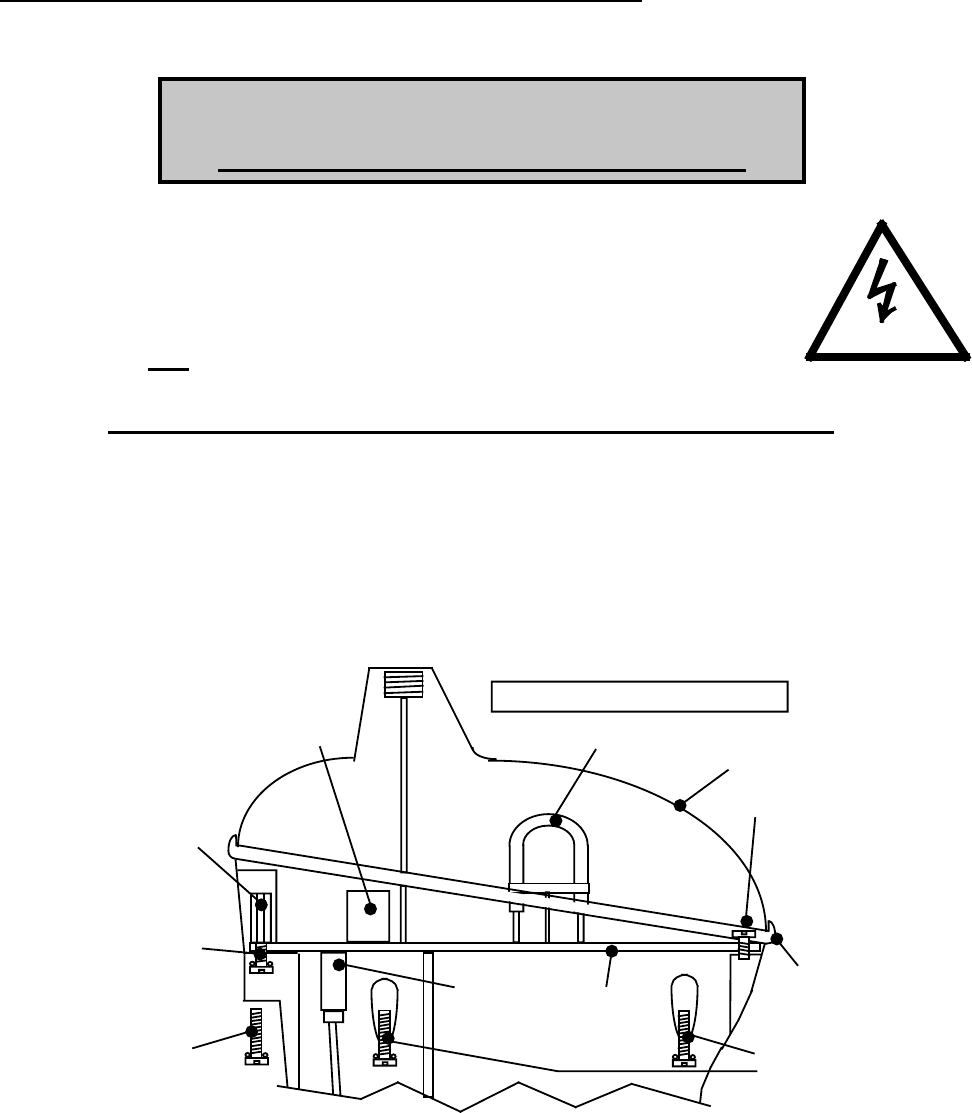
19
9.7 Fully disabling an E3
In the unlikely event that your E3 refuses to turn off then it may have a fault.
Procedures for dealing with a faulty E3 are covered in section 5 on false alarms and
in simple terms you should do the following…
• De-activate the EPIRB as per section 5.2
• Suppress its signal by wrapping the E3 in metal foil as per section 5.3
• Leave for 3 days until the battery is used up.
We do not recommend any other course of action. However, if it is absolutely
necessary to fully disable an E3 (by unplugging its battery) proceed as follows. This
is a dangerous task and should only be performed by a qualified technician.
WARNING
Risk of electric shock
Proceed at your own risk, no liability accepted
• Take the E3 below decks into the dry.
• Locate a flat bladed screwdriver with a long reach.
• Unscrew and retain the front 4 sealing screws.
• Pull the lanyard out and remove the 2 hidden rear screws.
• Do not as yet remove the sea contact screws.
• Lift the lens dome off. Remove and retain the grey gasket.
• Avoid touching the circuit board and the glass strobe tube.
• Hold the hexagon shaped pillars and remove the sea screws.
• Use a cross-headed screwdriver to remove the front screw.
• Grip the white plastic coil former and lift the circuit board up 3cm (1”).
• Using fingers, unplug the white 4-way battery connector.
• The flashing will now cease.
• Collect up all the parts and return them to your nearest service agent.
270V dc
Strobe
Front screw
Gasket
Hidden
screws
Sea
screws
Battery
connector
DANGER - HIGH VOLTAGE
sealing
screws
Front
pillar
Hex
Pull up on
coil former
Lens dome
Circuit
board

20
Technical specification
406 MHz Transmitter Operating frequency 406.025 MHz +/- 5kHz
Power output 5W typical
Modulation Phase (16K0GID)
121.5 MHz Homer Operating frequency 121.5 MHz +/- 3.5kHz
Power output 50mW radiated typical
Modulation Swept tone AM (3K20A3X)
Strobe light Type Xenon discharge tube
Light output 0.75 Candela minimum
Flash rate 23 flashes per minute
Battery Type Lithium Sulphur dioxide
Operating life 48 hours minimum
Shelf life 5 years typical in service
Environment Operating temperature -40°C to +55°C (class 1)
Storage temperature -50°C to +70°C
Automatic release depth 4 metres max. (13 feet)
Physical Weight 740 grammes (1.6 lb)
Height of body 21 cm (8.2 inches)
Length of antenna 18 cm (7 inches)
Approvals Satellite system Cospas-Sarsat T.001 / T.007
Europe ETS-300-066
Marine Equipment Directive
USA USCG / FCC approved
FCC ID : KLS-82-001
Worldwide IEC1097-2
Meets IMO regulations A662(16) A694(17) A810(19)
This device complies with the GMDSS provisions of part 80 of the FCC rules.

WARRANTY
This product is covered by a 12 month non-transferable manufacturer's
limited warranty commencing on the date of purchase. The warranty covers
faulty materials and workmanship during manufacture, but excludes normal
wear and tear, wilful damage, negligence, abnormal conditions and failure
to follow manufacturer's instructions.
The manufacturer shall not be liable for any consequential loss or damage
caused by a defective product. A copy of the full warranty conditions is
available upon request. This warranty statement does not affect your
statutory rights.
Claims under warranty should be directed to your local dealer with
supporting proof of purchase. Technical advice and information on local
dealers can be obtained from the address given below.
McMurdo Ltd
Rodney Road
Fratton
Portsmouth
Hampshire
United Kingdom
PO4 8SG
TEL +44 (0)1705 775044
FAX +44 (0)1705 819087
Email : sales@mcmurdo.co.uk
Record Serial No. (visible through dome) : _______________________
McMurdo Ltd 1998
The Copyright on this manual is owned by McMurdo Ltd. This manual, or
information from this manual may not be copied or otherwise transferred to
third parties using any media, including electronic, without prior written
permission of McMurdo Ltd.

McMurdo Ltd
Rodney Road
Fratton
Portsmouth
Hampshire
United Kingdom
PO4 8SG
A member of Chemring group PLC
82-163-001M issue 1